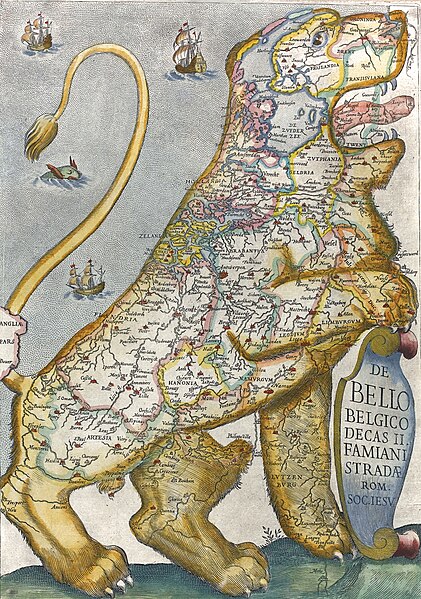The art of the Low Countries consists of painting, sculpture, architecture, printmaking, pottery, and other forms of visual art produced in the Low Countries, and since the 19th century in Belgium in the southern Netherlands and the Netherlands in the north.
Jan van Eyck, The Arnolfini Portrait, National Gallery, London.
Pieter Bruegel the Elder, Netherlandish Proverbs, 1559
Adriaen Brouwer, The Bitter Tonic, Städelsches Kunstinstitut und Städtische Galerie, Frankfurt am Main. Oil on oak, 48 x 36 cm. Adriaen Brouwer worked in both the northern and southern Netherlands and reflects shared artistic tendencies.
Terminology of the Low Countries
The Low Countries comprise the coastal Rhine–Meuse–Scheldt delta region in Western Europe, whose definition usually includes the modern countries of Luxembourg, Belgium and the Netherlands. Both Belgium and the Netherlands derived their names from earlier names for the region, due to nether meaning "low" and Belgica being the Latinized name for all the Low Countries, a nomenclature that became obsolete after Belgium's secession in 1830.
The Low Countries indicated in Latin as Belgico (1647)
On the title page of Descrittione (1581), an account of the history and the arts of the Low Countries, no less than three names are used to indicate the Low Countries: 1) Belgia (alongside the woman figure on the left), 2) i Paesi Bassi and 3) Germania inferiore (both to the right)
Under Philip the Good (1396–1467), Duke of Burgundy, the provinces of the Netherlands began to grow together: Flanders, Artois, Namur, Holland, Zeeland, Hainaut, Brabant, Limburg and Luxembourg were ruled in personal union. He has been honored by later humanists as the founding father of the Netherlands. (Portrait by Early Netherlandish painter Rogier van der Weyden, c. 1450).
The Latin title Index Batavicus is translated in the subtitle (not shown) as Naamrol van de Batavise en Hollandse schrijvers ("Index of Batavian and Dutch writers"). The Dutch Virgin sits on the Dutch lion. Left in the background a bookcase bearing the coats of arms of the Dutch Republic (1701).







